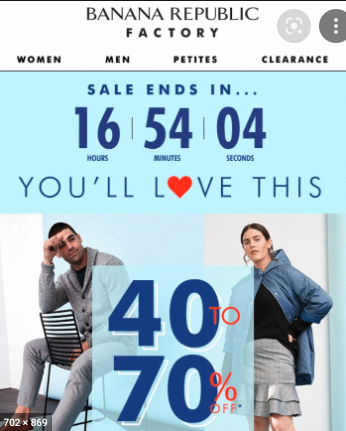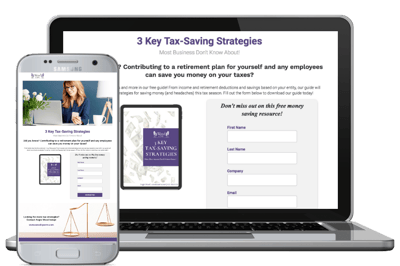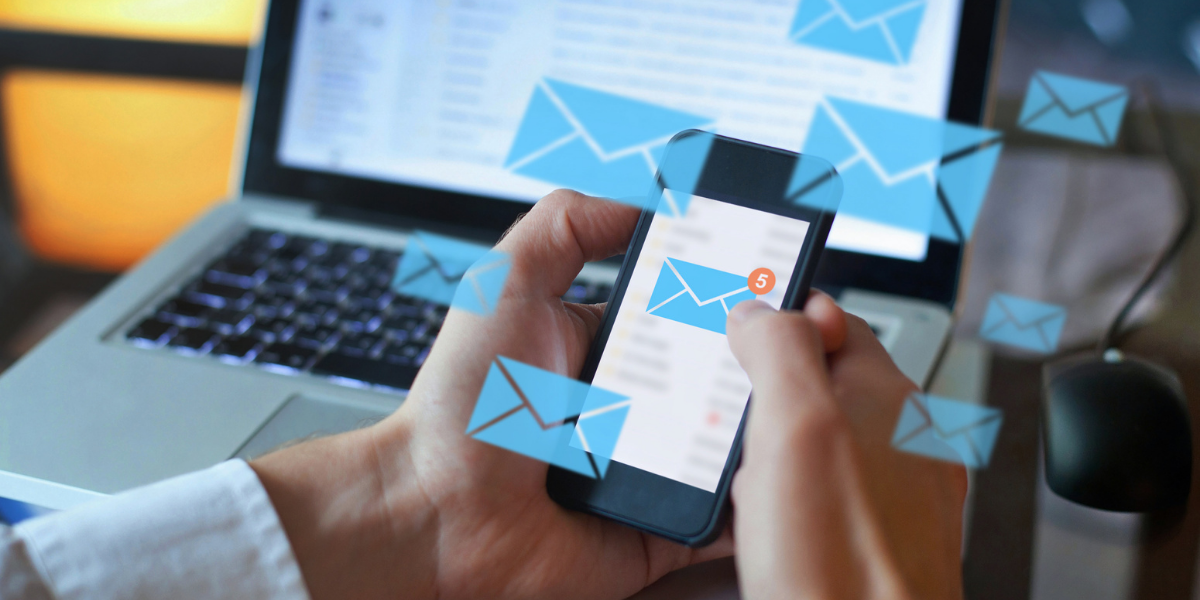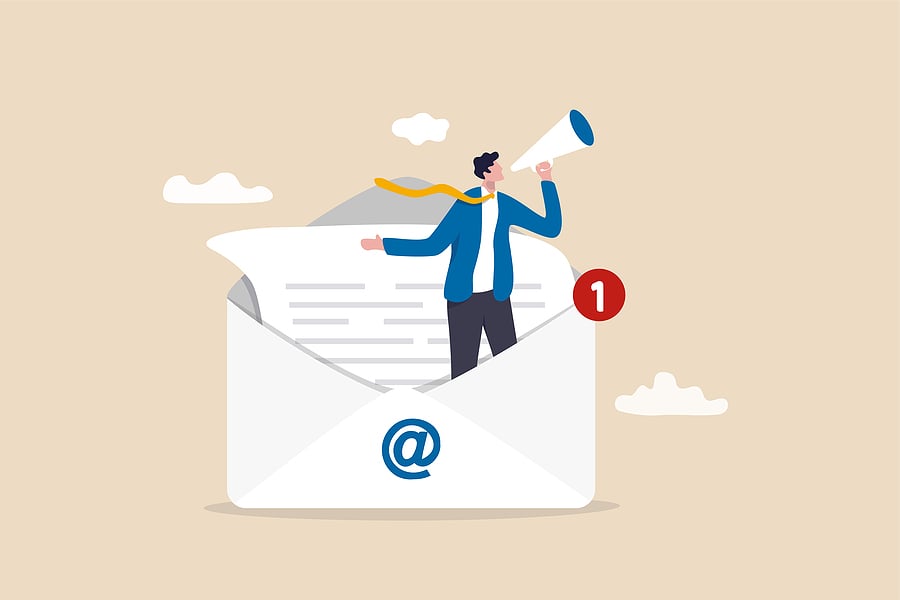Is Your Email Marketing Effective? Track These Key Metrics To Find Out
Part 3 of our Key Metrics Series Email marketing, when done well, can be one of the most effective ways to engage your audience. However, it doesn’t...

In 2019, more than 306 billion emails were sent and received every day. 😲
Yep, you read that right…EVERY DAY. And it’s expected that by 2025, that number will be more in the range of 376 billion emails per day! (from Statista)
With so many emails being sent, you’d think that email marketing would be on the decline — after all, how on earth do you cut through all of that noise?? It doesn’t seem like it would be an effective way to market your business.
However, the opposite is true. 
Despite the rapid increase in the number of emails people send each day, email marketing remains a highly effective marketing strategy. It helps you connect with your audience, generate leads, and boost sales.😌
After all, the vast majority of email users — 99%, according to OptinMonster — check their inboxes every day, with some checking their email as often as 20 times per day! It only makes sense to meet people where they are — and it seems that most of us are spending a lot of time in our email inboxes.
If your emails aren’t getting the traction you were hoping for, don’t throw in the towel yet. It may just be time to shake things up a little and try something new.
To boost the effectiveness of your emails and see real results in your ROI, check out these 2022 email marketing trends.
Powerful subject lines are vital if you want your subscribers to actually open your emails. The subject line’s job is to grab the reader’s attention and make them want to know more. 👇

Generic titles just won’t cut it.
 For instance, a subject that simply says “Monthly Newsletter” isn’t particularly intriguing, is it? (Please, whatever you do, DON’T give your emails titles like this!!) Routinely using generic titles — or worse, using the same title every time — will only train people NOT to open your emails.
For instance, a subject that simply says “Monthly Newsletter” isn’t particularly intriguing, is it? (Please, whatever you do, DON’T give your emails titles like this!!) Routinely using generic titles — or worse, using the same title every time — will only train people NOT to open your emails.
So what should you do instead? We’re glad you asked.
Here are our best tips for subject lines that will entice readers to open your emails:
With the exception of the last three, don’t use all of these tips for every email…try one or two and see how it works for you, then switch it up and try others for future emails.
 Interactive content invites readers to engage with your email by tapping, swiping, clicking, or watching. Interactive elements can include:
Interactive content invites readers to engage with your email by tapping, swiping, clicking, or watching. Interactive elements can include:
Content like this helps set your email apart from the crowd and cut through the noise of a full inbox. It makes your emails more engaging to read and offers a great opportunity for conversion.
According to Litmus:
"91% of consumers want interactive content, but only 17% of marketers provide it."
They also note that marketers who use interactive elements report seeing a 200% improvement in click-through rates. If you ask us, this seems like a huge missed opportunity to grab your subscribers’ attention!
 You can use interactive emails to highlight new product features, offer a sneak-peek of an upcoming event, build excitement for a big announcement, or add some levity (we love using GIFs to make our audience laugh!). 👉
You can use interactive emails to highlight new product features, offer a sneak-peek of an upcoming event, build excitement for a big announcement, or add some levity (we love using GIFs to make our audience laugh!). 👉
And, as we already mentioned, interactive elements can boost your email engagement. If your open or click-through rates are low, sending interactive emails can give those important key metrics a boost.
Keep these tips in mind when adding interactivity to your emails:
 Click-through rate is one of the big email key metrics you want to hone in on. But it’s hard to have a good click-through rate when you don’t give your subscribers a reason to click! If you give your readers everything they need to know in your email, they won’t have a reason to click through to your website.
Click-through rate is one of the big email key metrics you want to hone in on. But it’s hard to have a good click-through rate when you don’t give your subscribers a reason to click! If you give your readers everything they need to know in your email, they won’t have a reason to click through to your website.
For instance, when you incorporate an entire blog article into your email, not only do you miss the chance to send people to your website, you can’t tell who actually read the article…making it difficult to know if your content is relevant to your audience.
Instead, include just a portion of the article (like the introduction or a summary), and then have readers click a button to continue reading on your website.
A quick client success story 🎉:
We made this change to one client’s emails (presenting only an introduction to the blog instead of the entire blog article), and they immediately saw a huge uptick in their email engagement. In fact, their click-through rates increased from around 4% to over 19%! They have around 7,000 blog subscribers, so this increase represents about 1,000 new hits per blog and over 12,000 hits per month!! This is a HUGE boost for their SEO (remember, your SEO isn’t improved when people read your emails — you only gain SEO value when they click through to visit your website.) We can now easily see how much traffic they’re getting to their website from clicking the blog link, as well as how many of those on their email list are clicking through to read the article. This makes it easy to tell which articles are driving traffic (i.e., are interesting to readers) and which are not.
Tip: Once you make this change, don’t forget to review the list of readers who clicked on the link so you can reach out to them. If they made the effort to click through to finish reading the blog, there’s a good chance they’ll want to talk more about that topic. They might even be ready to make a purchase!
 Finding success with your email marketing involves a lot of experimentation to see what works best for your specific audience. This is true of the content you include in your emails, and it’s also true of when you send those emails.
Finding success with your email marketing involves a lot of experimentation to see what works best for your specific audience. This is true of the content you include in your emails, and it’s also true of when you send those emails.
According to Hubspot, the best days to send emails for great open rates are typically Tuesday or Friday. But for the lowest number of unsubscribes, you’ll want to send your emails at the beginning of the week.
They also note that to get the highest open rates, you should send your emails at 10 AM, 1 PM, or 6 PM. Generally, you want to send your emails when your audience begins or concludes their day, or when they have a break to check their emails (such as a lunch break).
However, keep your audience in mind.
What works great for one audience may not work for another. That’s why it’s important to experiment with sending your emails on different days and at varying times, and track your open and click-through rates.
Another tip: don’t send your emails right on the hour. Instead of sending them at 8am, try 8:15 or 8:45.
 One thing that can really mess up your email engagement is an outdated email list. Unengaged contacts can negatively impact not only your open rates, but your email deliverability rates as well.
One thing that can really mess up your email engagement is an outdated email list. Unengaged contacts can negatively impact not only your open rates, but your email deliverability rates as well.
We’re guessing it’s been a while since you last cleaned up your list, so you might want to go do that right now (well, after you finish reading this article, that is…😉, 😉).
Ideally, you should scrub your email list at least every 6 months (more often if you have a high number of new subscribers coming in). If a lot of your emails bounce when you send out an email campaign, that’s an indication that you have old or incorrect email addresses on your list, and it’s time to clean it up.
Scrubbing your email list helps:
Not sure where to start? We’ve got you covered. Here’s a quick overview of how to scrub your email list:
If your email list is looking a little sparse after you scrub it, it’s time to build it back up. The best way to do that is to offer something in exchange for subscribing to your email list.
 For example, offer lead magnets like:
For example, offer lead magnets like:
to entice people to sign up for your emails. Offer these lead magnets through a website pop-up, QR code, social media post, or a loyalty or referral program. In addition, encourage current subscribers to share and forward your emails to their colleagues and friends.
Incorporating some or all of these 2022 email marketing trends into your next email campaign can help improve your engagement and, in turn, impact your ROI.
Want help creating great emails that engage your subscribers? You’ve come to the right place! Wild Fig can build an email marketing strategy that will help you get more opens, clicks, and conversions from your email list.
Contact one of our experienced team members today to learn more about our email marketing services!

Part 3 of our Key Metrics Series Email marketing, when done well, can be one of the most effective ways to engage your audience. However, it doesn’t...
![Should You Send Emails to Unengaged Contacts? [Spoiler: No, and Here’s Why…]](https://www.wildfigmarketing.com/hubfs/bigstock--220855843.jpg)
You know the feeling: you’ve finally collected a decent number of email addresses for your list…but now they don’t seem to be engaging with your...

In 2022, the number of global email users was forecast at 4.3 billion. In 2025, that number is expected to grow to 4.6 billion—that’s more than half...